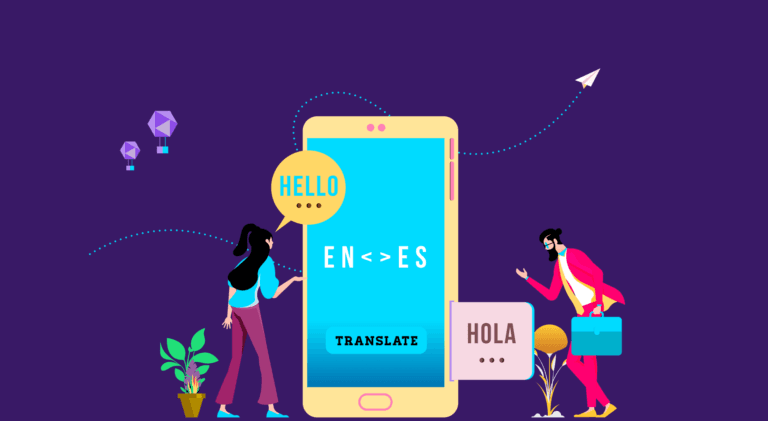
In today’s digital age, blogging is regarded as a powerful and long-term marketing asset for a business. If your business does not have a blog, you miss out on an opportunity to increase your company’s presence and customer base.
When blogs originally emerged, they were typically used as a platform to share personal opinions, interests, feelings, and thoughts. Over some time, blogs soon began to show up on commercial websites. These websites’ blogs are intended to draw visitors, boost website traffic, and provide relevant information to your target audience to raise demand for the company’s services and encourage them to revisit your website.

A website that only supports one language is just as limited as a blog that only supports one language. Language diversity and multiculturalism have spread to many nations in the digital world. Research has proven that most internet users prefer to do their searches in the language that is most familiar to them.
But blog translation is not as simple as it seems. Hence, don’t just jump to a conclusion upfront when you want to interpret some of your blog posts or website from scratch. Perhaps, weighing the pros and cons of blog translation is critical before making a decision.
Let’s look at some of the advantages and disadvantages of translating blogs.
Pros of Blog Translation
1. Boost SEO
A website’s ranking in search engines like Google is greatly influenced by SEO, which will increase traffic to your site. And having your blog available in several languages is one of the finest ways to boost your SEO efforts.
A localized website is the most effective method to accomplish this. It entails using multilingual SEO or target keywords in different languages and translating the blog or pages of your website.

Professional translators focus on localizing blogs and consider cultural factors like the historical, sociological, and even political aspects of a specific foreign market. All other marketing methods that can significantly affect your company’s bottom line are built on this.
2. Increased ad revenue
Another benefit of actively pursuing an SEO plan that may involve translating your blog and other parts of your website is that it will boost your company’s ad revenue. After all, by translating blogs to multiple languages, your business will reach a wider audience, increasing the possibility that blog posts will be shared.
In short, optimizing your blog to be more functional and SEO-rich in multiple languages will raise your ad revenue.
3. Test for potential audience
Testing is always a crucial step that needs to be taken into account in any SEO or marketing strategy you’re trying to adopt, even though it may not come to mind when considering the advantages of translating blogs into different languages.

An excellent method to discover chances of getting new audiences involves testing your blog in multiple languages. You might never know about your potential global audience if you don’t translate your blog content into different languages.
For instance, you can measure if your blog content could be relevant and well-liked in other countries or locations. In addition to increasing website traffic, translating your blog into multiple languages may significantly help to test the waters and tap into international markets.
4. Generate brand trust
Did you know that blogs rate higher than the majority of other sorts of marketing content when it comes to influencing consumers? Although it might seem that readers prefer professional content like white papers, case studies, and press releases to be the most reputable, blogs are much more so.

You may influence consumer attitudes and win their trust by translating your blog. Blogs, as opposed to website content, have a more authentic vibe and feel less like propaganda and a sales pitch.
Current and pertinent blogs are fantastic for SEO and keep people intrigued.
Cons of Blog Translation
1. Need for more content
Blog translation necessitates putting more effort into coming up with and developing more ideas. Unlike a website, a translated blog cannot have generalized or repetitive content. Although it may not seem like a serious problem, blogger burnout does exist.
2. Need for a certified translator
Even though blogging tends to be a more casual job, you still need to handle it professionally if you want to win over your readers’ respect and trust, especially when it comes to translating your blog.
You require a certified translator to ensure your blog is comprehensive in all languages. The professional translation service cost depends on many factors, including the language’s prevalence. Generally, freelance translators and agencies charge higher translation fees for a rare language.

3. Additional expenses
Add up the cost of maintaining your blog in a single language. Simply multiply the same by the number of additional languages you plan to blog in. Managing your blog in different languages calls for additional expenses.
Every cost simply grows exponentially. Everything from translator fees, SEO experts’ fees, the cost of SEO tools, and hosting fees add up when you plan to translate your blog into different languages.
4. Need for adaptation
While every language has nuances and peculiarities, some go too far. For instance, if you want to translate your blog into Arabic or Hebrew, you would need to rearrange it since those languages, unlike English, are written from left to right. Again, this will result in additional expenses.
5. Additional SEO work
Although international SEO is a great advantage, it necessitates professional work and, as a result, a corresponding SEO specialist, who you will undoubtedly have to pay extra.
A Quick Summary
Although there are ample benefits to translating blog content, there are also some drawbacks. Even if it may seem simple, blog translation requires immense work and might even be equivalent to a full-time job. So, weighing your situation before you jump into blog translation is essential.
Key Takeaways
- Having a translated blog in different languages is a big go-ahead and can help you reach an untapped audience where your primary language makes no sense.
- Research has shown that many people prefer browsing their interests on the internet in their own language.
- Translated blog content will give your business a greater audience reach and boost ad revenue.
- One of the significant drawbacks of blog translation is that it necessitates professional translators to carry out the service, who you will undoubtedly have to pay.
- Blog translation also requires SEO specialists to spread your ideas and information efficiently, which is an additional expense.
FAQs
Translating your company’s blog will increase your website traffic and attract the attention of the untapped populace since you will be speaking to them in their language.
You can use professional translation services to translate your blog into multiple languages to ensure good quality, culturally correct translation, consistency, and accuracy.
One of the significant drawbacks of using Google or other free online translation services is the level of accuracy. The online generated translation may have inconsistent or low accuracy across different languages.
To translate your WordPress blog into multiple languages, select the Polylang plugin, press the + button next to a language under “Translations,” and add your blog content to translate into the chosen language.
To create a website in multiple languages, select “Appearance” and click on the “Language Switcher” button to choose the languages you want to display, and then click on “Add to Menu.” You will now see language options added to your navigation menu.
Latest Blogs
Explore how Google’s 2025 AI search updates triggered ranking chaos. Learn actionable strategies to adapt your SEO for AI Overviews, zero-click searches, and SERP volatility. Stay ahead now.
Learn how to rank on AI search engines like ChatGPT, Perplexity, and Gemini by optimizing your content for authority, structure, and relevance. Stay ahead in AI-driven search with this strategic guide.
Explore the best healthcare SEO services for your medical practice. Improve online visibility and effectively reach more patients in need of your services.
Get your hands on the latest news!
Similar Posts

Translation
5 mins read
All You Need to Know About Language Translation and Terminology Management

Translation
5 mins read
6 Reasons to Translate Content into German

Translation
5 mins read